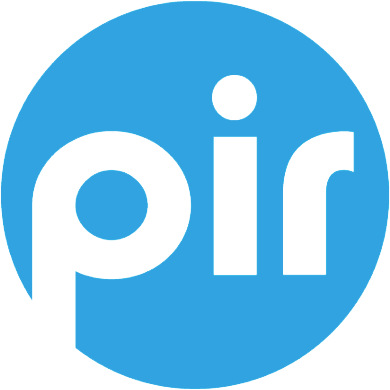HTTPS – HyperText Transfer Protocol Secure (HTTPS) is a critical defense and serves as an easy process to integrate into your existing system to protect web page authenticity and keep user communications, identity and web browsing secure. If you see “https://” at the beginning of a website (ex. https://pir.org/) you are accessing a secure HTTPS connection. For additional background on HTTPS check out our “What Is All the Hype Around HTTPS” blog post.
Phishing – Phishing is a cybercrime where the target(s) are contacted by email, telephone or text message by someone who is impersonating an organization or individual in order to obtain personal information (i.e., passwords and credit card details). Those affected by phishing can become victims of identity theft.
DDoS attacks – A distributed denial-of-service (DDoS) is a malicious attack that occurs when multiple systems overwhelm a target or an infrastructure with a flood of internet traffic. A DDoS attack can be compared to bumper-to-bumper traffic that prevents you from arriving to your destination. There are so many simultaneous requests for web pages or other responses that your server cannot fulfill them in a timely manner, and therefore will “time out” and not return any pages to the user.
PII – Personally Identifiable Information (PII) refers to information that can be used to find or trace an individual’s identity. PII can be used alone or with other personal information that is linked to a specific individual. Organizations that have access to individual’s PII (whether they are managing, transmitting or storing that information), must take extra precautions to be sure that information stays secure and that they are compliant with privacy requirements.
GDPR – General Data Protection Regulation (GDPR) is a European Union (EU) data privacy regulation that outlines the requirements for how companies process personal data from the EU. Prior to GDPR taking effect on May 25, 2018, the WHOIS Look Up included some PII about registered domain name holders. With the implementation of GDPR, the WHOIS requirements have changed so the WHOIS lookup will now include only non-personal data related to the registered domain name. For more information now that GDPR is here, read our “GDPR: Next Steps for the Domain Industry,” blog post.
Congratulations, you’ve passed Domain Lingo 101! In this series you’ve learned what a domain is, the important players and their roles within the industry, and even explored some of the more technical terms related to the domain name system and online security. Based on this post it may seem like the internet is complex and rife with security and privacy threats, but the good news is that there are many organizations within the domain industry and larger internet community that are working to make sure the internet is a safe and secure place for all. By educating yourself on the ways the internet works, the threats that do exist and the best ways to combat those threats, you’ll be well positioned to harness the transformative power of the internet.
Stay tuned for the next domain blog series called “The Domain Insider’s Guide to the Industry” launching in February, where you’ll learn more about what it’s like to work within various segments of the domain industry.

